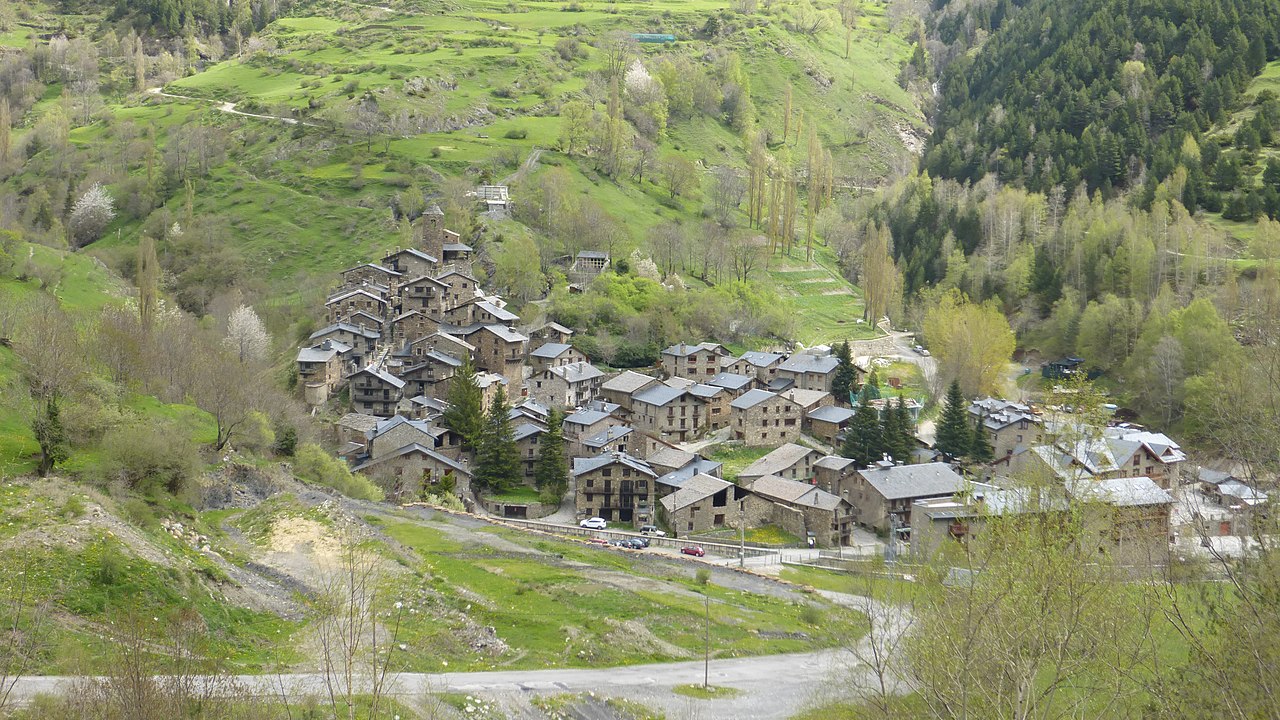
The small town of Civis bones It is a real gem nestled in the Pyrenees. Specifically, you will find this beautiful town of barely seventy inhabitants in the Aós Valley, Part of Setúria coma or high valley of the river of the same name.
Historically, it belonged to the county of Castellbó and later constituted an independent municipality until 1970, when it became part of that of Valira Valleys, which, in turn, is integrated into the Lleida region of high urgel. Next, we are going to show you everything you can see and do in Os de Civis, but first we must tell you about its peculiar geopolitical circumstances.
The situation of Os de Civis
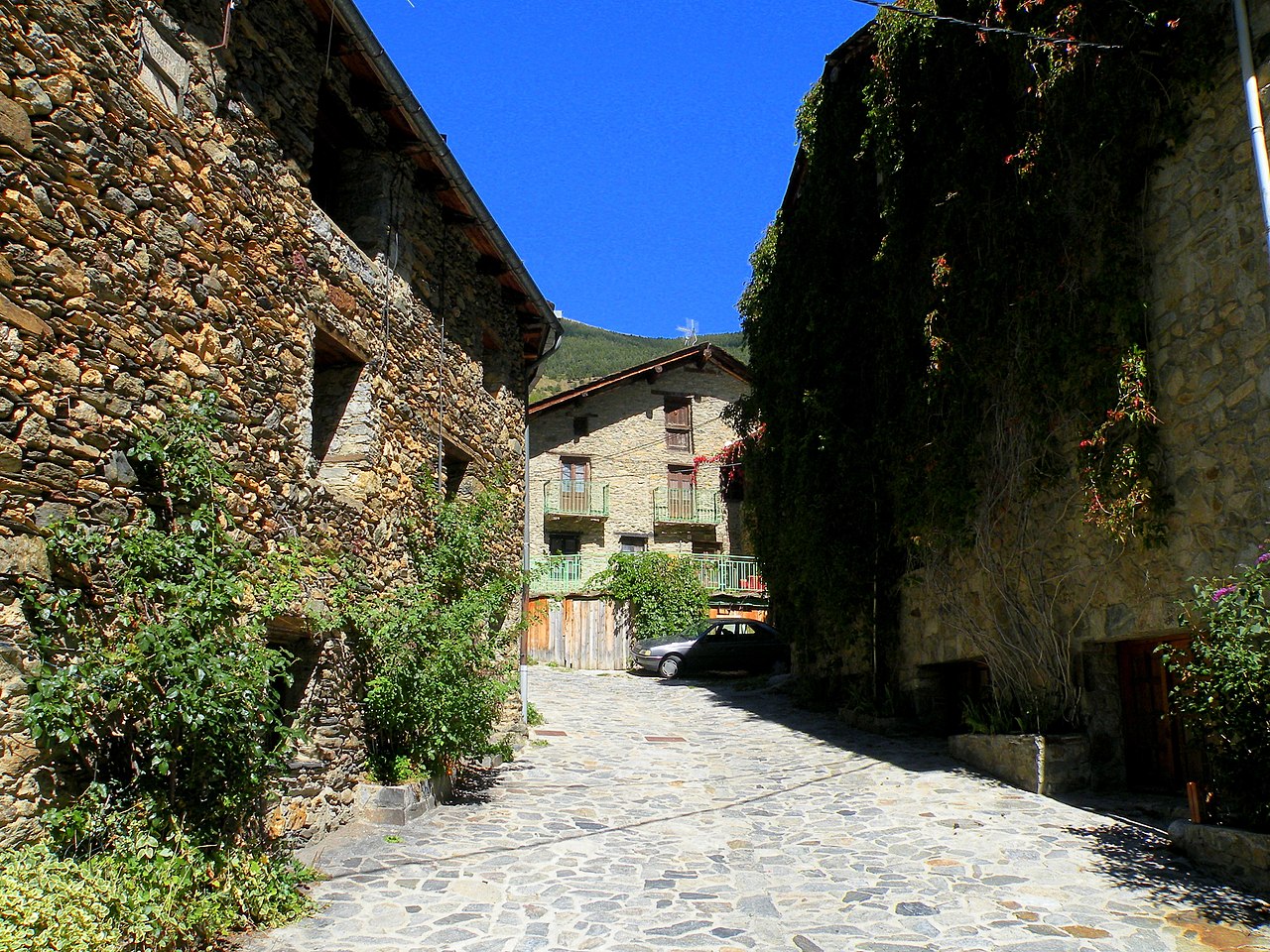
Typical street of Os de Civis
This small town in the province of lerida is the only example in Spain de periclave. This foreign term refers to a part of the territory of a country that, without being isolated from it, is very difficult to access through it. Consequently, the main way to get there is through foreign lands.
Precisely for this reason, it has the regime of decentralized municipal entity of Valles del Valira. Because the only road to Os de Civis runs through the Principality of Andorra. It is the CG-6, which connects it with aixovall, in the Common of Saint Julian of Loire. More difficult is direct communication with the rest of the municipality to which it belongs. In this case, it is done on foot crossing the Coll de Conflent, of more than two thousand meters of altitude.
Therefore, Os de Civis is on the Andorran side of the aforementioned Aós Valleybut has always belonged to Spain and there have never been any territorial claims by the principality. In any case, once we have explained how to get to this beautiful villa, we are going to show you everything you can see in it.
What to see in Os de Civis
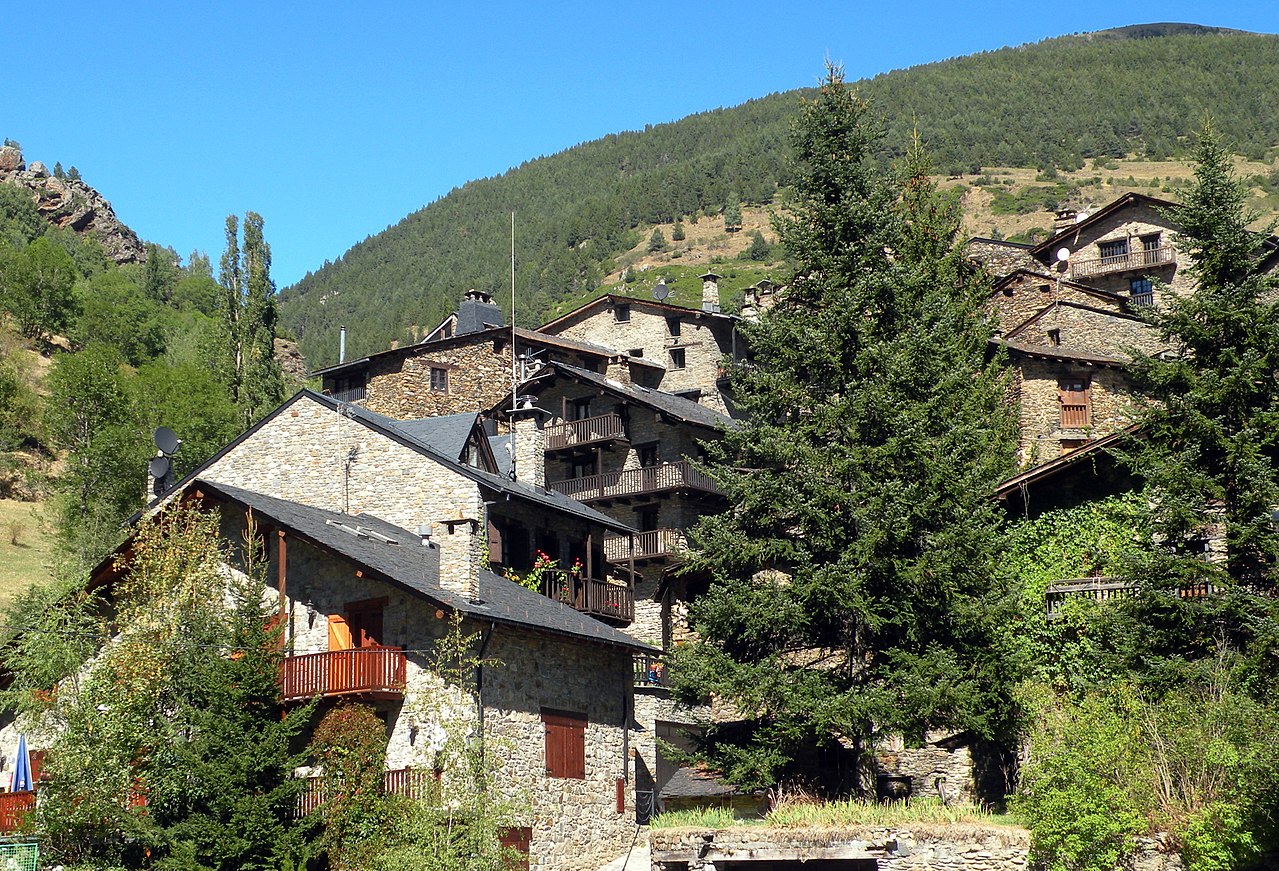
The hamlet of Os de Civis
The beautiful town of Lleida is a monument in itself because it has managed to preserve all its medieval charm. Walking through it is going through narrow, cobbled streets that sometimes even seem rather winding passageways under the houses. These are precisely the spitting image of the Pyrenean architecture. They are built of exposed dark stone with slate roofs. They also have balconies and traditional doors.
As an anecdote, we will tell you that the inhabitants of these houses place a carlina on the lintel of their doors. It is a good size thistle whose function is to scare away evil spirits. Small wooden boxes that you will see throughout the town will also call your attention. They are the light meters that the locals have kept in them to preserve the harmony of the architectural ensemble.
Next to these old houses, you will find others built more recently, but respecting the same architectural style so as not to spoil the wonderful urban ensemble. you will also find tourist goods shops and catering establishments. Most of these are located on the main street of the town. But, following a steep stone path, you will reach the main monument of Os de Civis.
The church of San Pedro and Santa Margarita
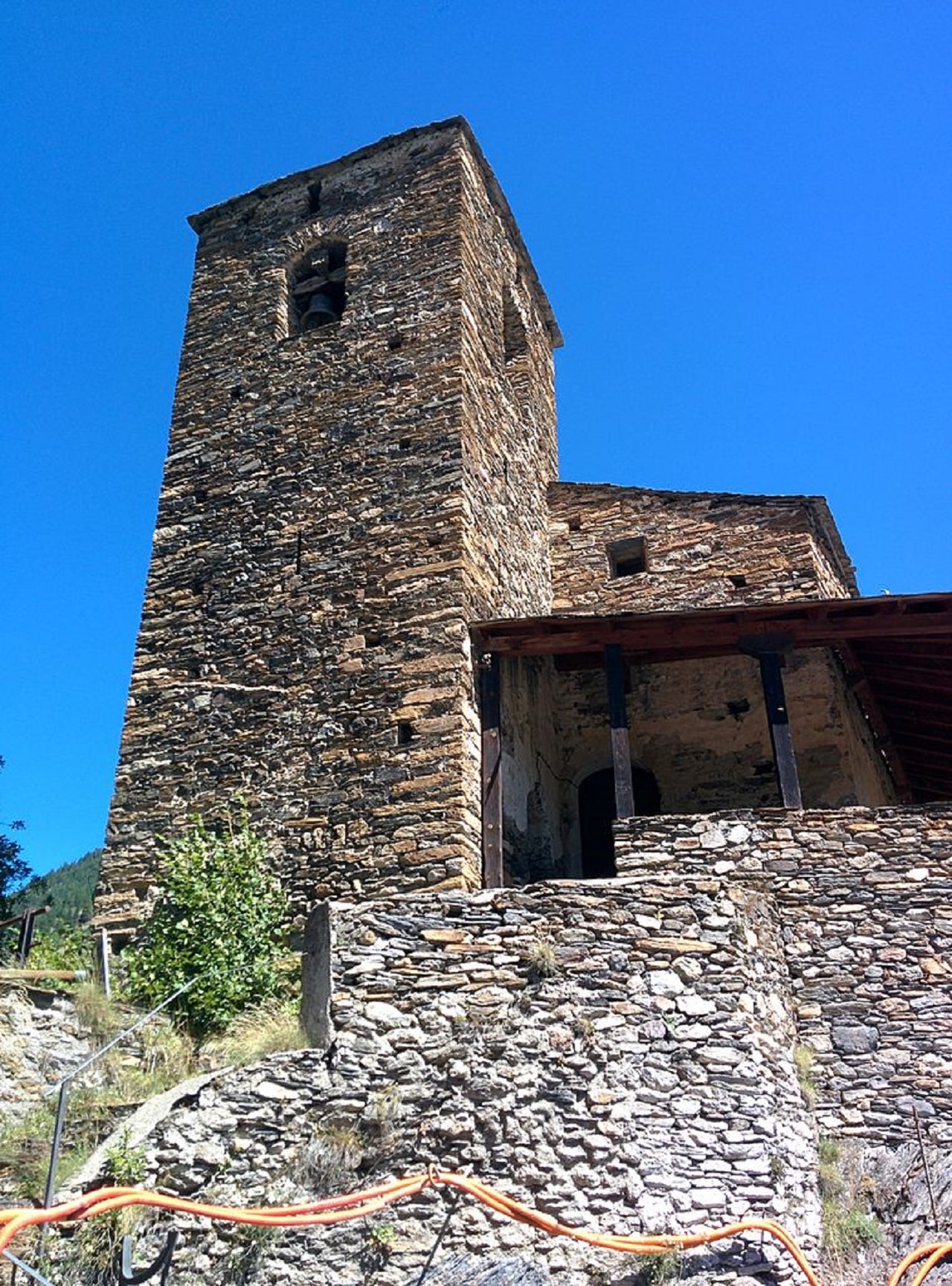
The beautiful church of San Pedro and Santa Margarita
This is the temple dedicated to these saints, which was a primitive castle. It's a simple romanesque church also built in exposed stone that stands out over the town from the top of a hill. It has been restored a short time ago, since it was in poor condition. Its structure was consolidated and the portico, which was badly damaged, was repaired.
The first written mention of this temple is from 1312 and it also consists of a square apse and bell tower. As for the interior, it is arranged in a single nave with side chapels. It is listed as Asset of Local Interest.
Also, inside it housed a gothic style wall fresco which is currently in the Diocesan Museum of Urgell. It is a pictorial ensemble that reproduces the Holy Supper and has dimensions of 188 by 263 centimeters. Due to its age, it has lost a good part of its polychromy.
The surroundings of the Lleida town
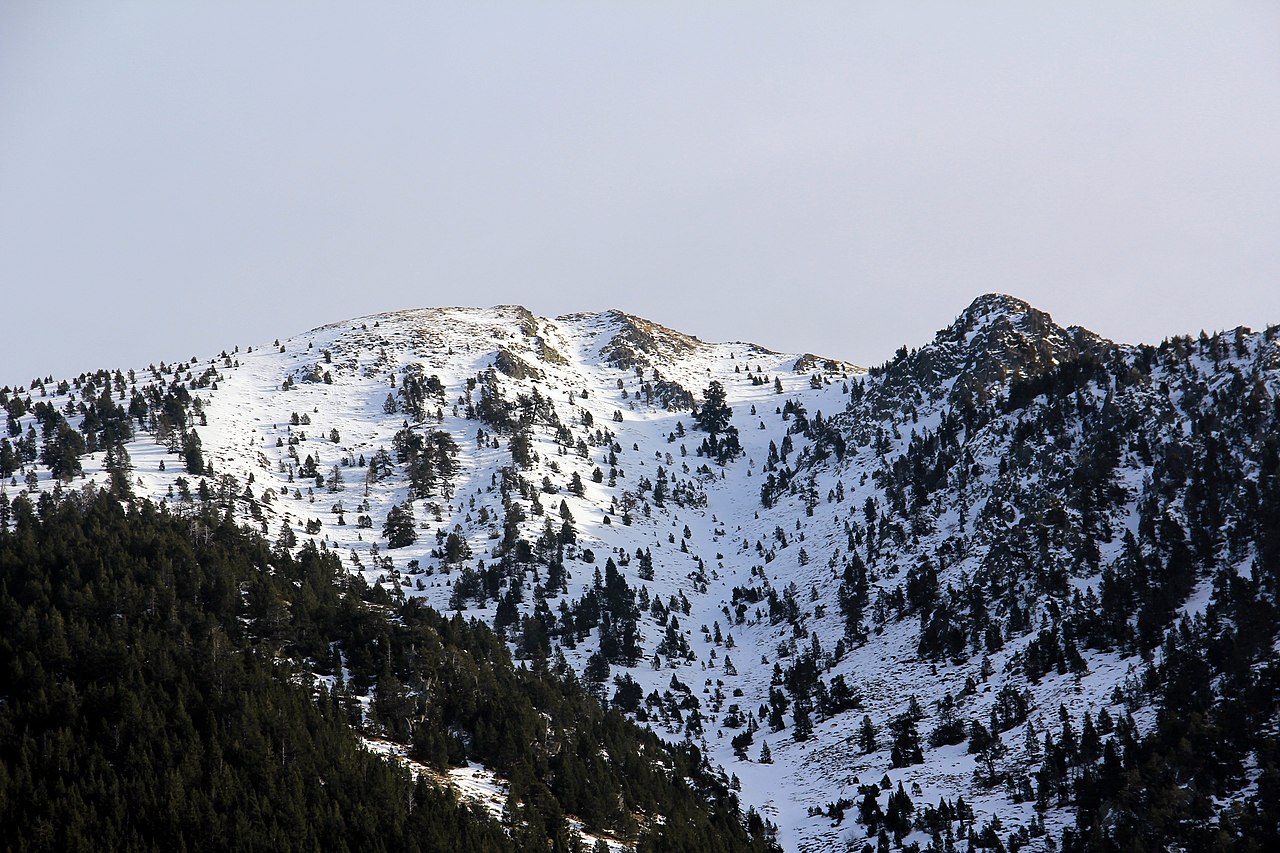
Bony de la Pica, in the surroundings of Os de Civis
If Os de Civis is spectacular, its surroundings offer you even more beauty. As we told you, the town is in full Lleida Pyrenees, at a height of almost thousand five hundred meters. In addition, it is surrounded by beautiful forests and countryside that you can explore both on hiking trails and on horseback or, in some cases, with a mountain bike.
The most outstanding of these routes is, precisely, the one that goes to the Coll de Conflent, which, as we have told you, communicates the town with the rest of the province of Lleida. It is almost ten kilometers long and its difficulty is medium because it has a cumulative drop of almost six hundred meters. Leave Os de Civis and return to this town, although, once you reach the top of Conflent, you can continue along the santa magdalena valley to the rest of the Catalan territory.
It begins at a curve in the Obaga de Os de Civis and follows the course of the Salória river. Once at the top, the route flanks the Bony de Trescui and the Bony de la Costa to reach Servellá and descend to the starting point of the path. It offers you wonderful views, as it runs entirely through the High Pyrenees Natural Park.
This protected space of almost eighty thousand hectares includes places of extraordinary beauty. You will be able to see them doing this route and other itineraries such as that of the Cultia, that of Montaner or that of Setúria. You will also see species that inhabit it such as the golden eagle, the griffon vulture, the chamois or the otter. With a bit of luck, you might even come across some capercaillie, as it houses the largest population of this bird in the entire Iberian Peninsula.
bixessarri
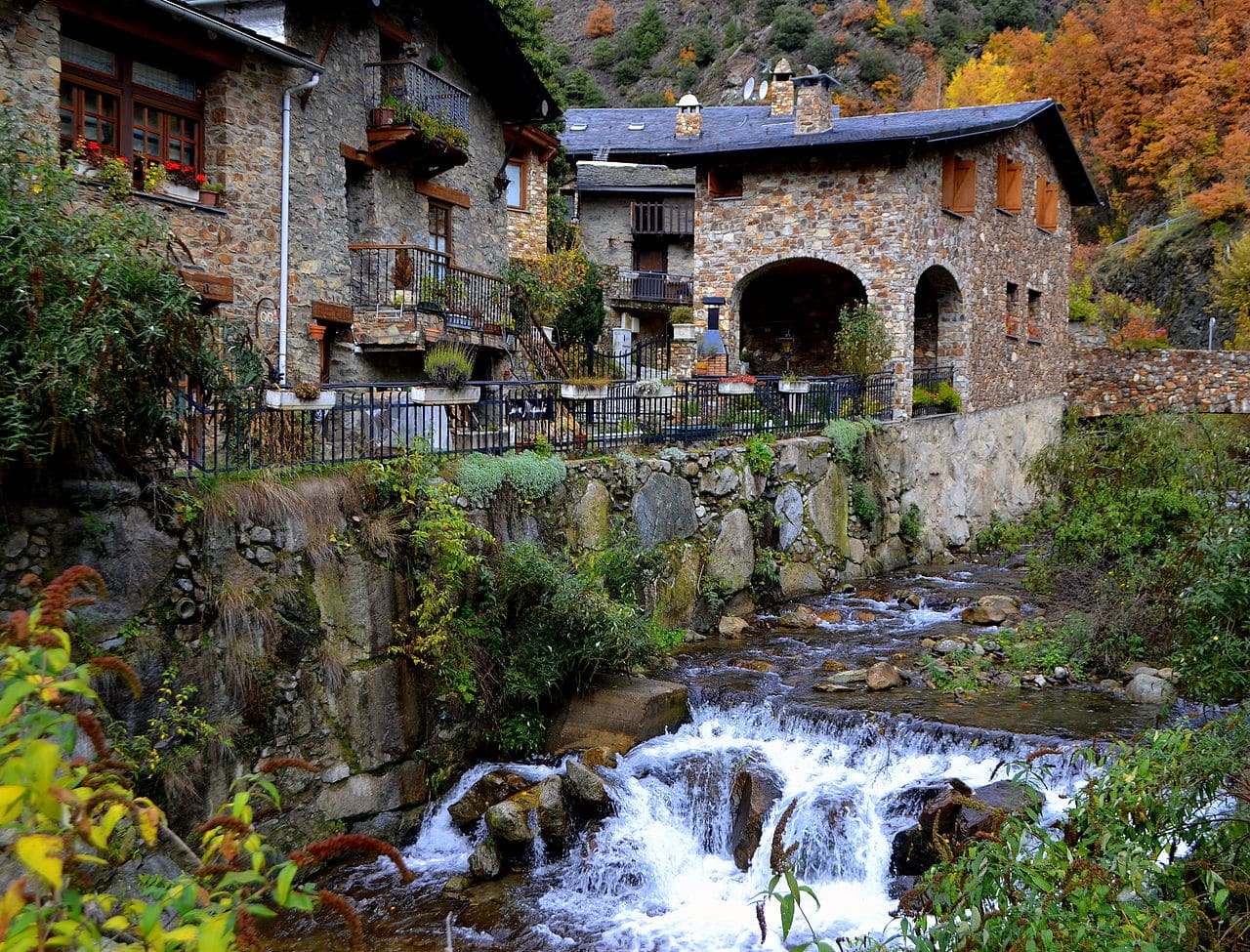
View of the town of Bixessarri
On the other hand, when you go to Os de Civis or when you return from this town, you will pass through Bixessarri, a beautiful town that belongs to the Común or parish of Saint Julian of Loire, one of the seven that make up the Principality of Andorra. With barely forty inhabitants and bathed by the Aos River, it also stands out for its stone and slate houses and its medieval streets.
But, above all, we advise you to visit the small St. Stephen's Church, also declared A Cultural. It has a rectangular plan without an apse and the roof is gabled. It also has a porch and bell tower. As for the interior, the apse has an XNUMXth century and Baroque altarpiece dedicated to Saint Stephen. The choir belongs to the same style and period.
aixovall
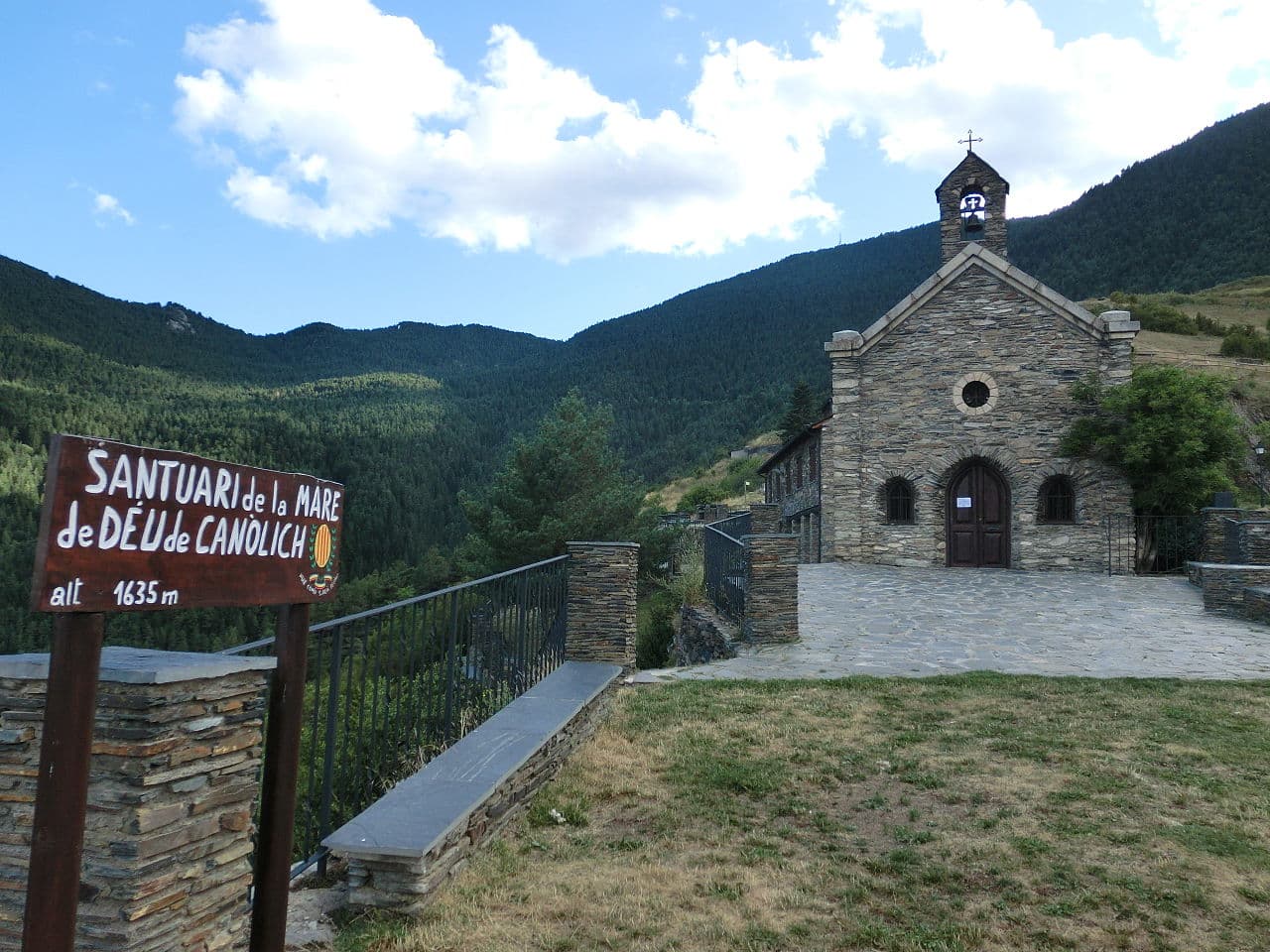
The Sanctuary of Canólich
You will also pass on your car trip to Os de Civis through Aixovall, a small town like the previous one, although with several places of interest. It is the case of the small St. Philomena's Church, whose construction date is unclear, but which houses a beautiful ceramic mural created by the artist Sergio Mas. The work represents the Holy Family crossing the medieval bridge that crossed the Valira River and that was destroyed by a flood in 1982.
On the other hand, we recommend that you see the three sources of Aixovall. Are that of Tosca, that of Joans and that of Cóms. But, if you like adventure, you can't miss the via ferrata 150 meters long and 40 unevenness that goes up the walls of the Tossal Great. It is not very difficult, but if you consider yourself an expert in this type of ascent, there is another more complex free run that reaches up to 990 meters high.
In addition, very close to Aixovall you have the Sanctuary of Canólich. The current construction is from the XNUMXth century, but the existence of the monastery in the XNUMXth century is already documented. In fact, it housed a carving of the virgin of that century that, at the moment, is conserved in the church of San Julián de Loria. Likewise, the sanctuary keeps a Baroque altarpiece from the XNUMXth century.
Other towns close to Os de Civis
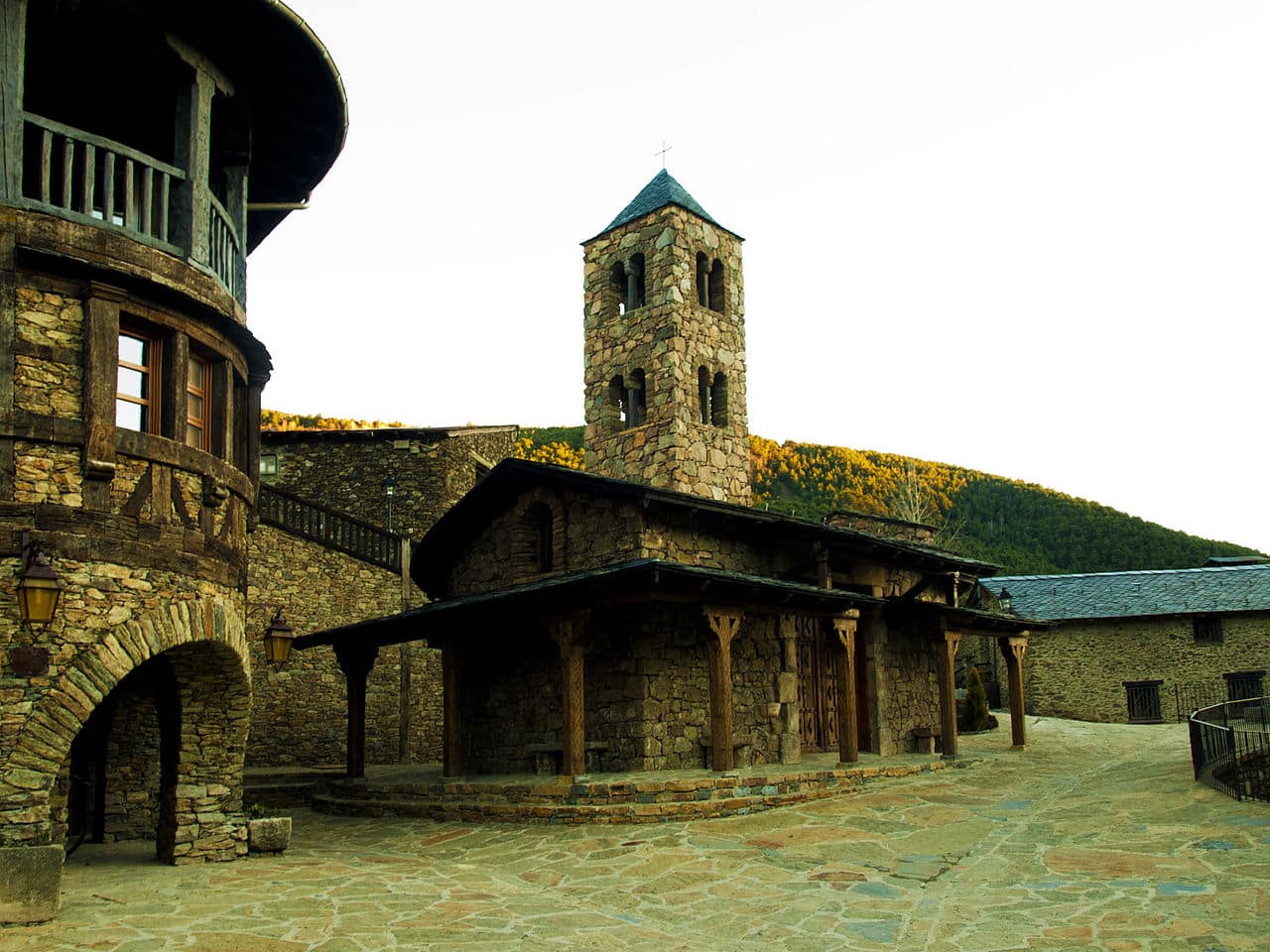
Auvinyá center with its church of San Román
We are showing you small towns that you will come across on your trip to Os de Civis or its surroundings. We are not talking about those belonging to the municipality of Valira Valleys, which are also very beautiful. But, as we have told you, they are only accessible after a long walk from the town on the Andorran side or by car from inside Lleida.
Therefore, in his own Common of Saint Julian de Loire You can go to other nearby towns that are also characterized by their medieval streets and their typical stone and slate houses. precisely, in fontaneda you can see some borders, the name given in this area of the Pyrenees to the rural buildings used to store agricultural products and stables for livestock. We also recommend that you visit the church of san miguel, a small Romanesque temple from the XNUMXth century.
He's not the only one in the area. In fact, almost all the villas in this Community have one. so, in Auvinya You have the one in San Román. But this villa is famous for the legend of the White Lady, which symbolizes the freedoms of the Andorran people against the old feudal power. Likewise, in Juberri you can see the church of San Esteban and in Melted that of San Sernín.
In conclusion, we have shown you everything you can see and do in Civis bones. But visiting this peculiar town in winter Catalonia located on the Andorran slope also allows you to enjoy the ski resorts from the area. Among them, some as spectacular as Grandvalira u Ordino Arcalis. Come and get to know this small Lleida town and enjoy its surroundings.